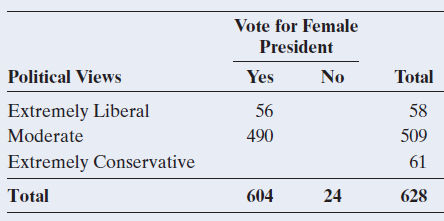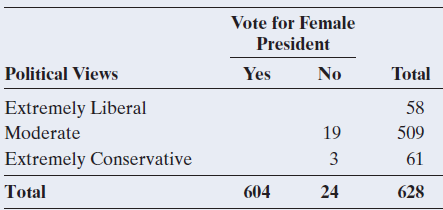For testing independence in a contingency table of size r à c, the degrees of freedom (df)
Question:

a. Given the cell counts and the row and column totals, fill in the counts that must appear in the blank cells.
b. Now, suppose instead of the preceding table, you are shown the following table, this time only revealing a
2 × 1 block in the lower-right part. Find the counts in the remaining cells.
This example serves to show that once the marginal totals are fixed in a contingency table, a block of only (r - 1) × (c - 1) cell counts is free to vary. Once these are given (as in part a or b), the remaining cell counts follow automatically. The value for the degrees of freedom is exactly the number of cells in this block, or df = (r - 1) × (c - 1).
DistributionThe word "distribution" has several meanings in the financial world, most of them pertaining to the payment of assets from a fund, account, or individual security to an investor or beneficiary. Retirement account distributions are among the most...
Step by Step Answer:

Statistics The Art And Science Of Learning From Data
ISBN: 9780321997838
4th Edition
Authors: Alan Agresti, Christine A. Franklin, Bernhard Klingenberg





